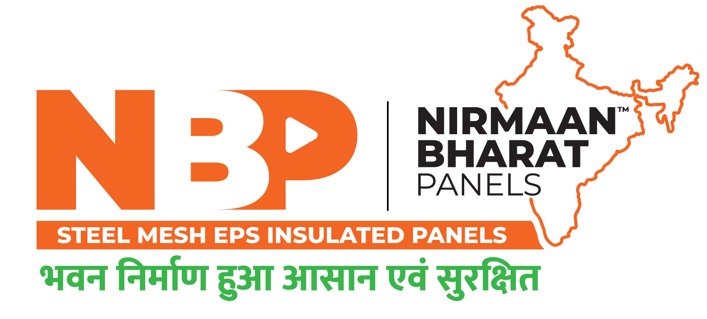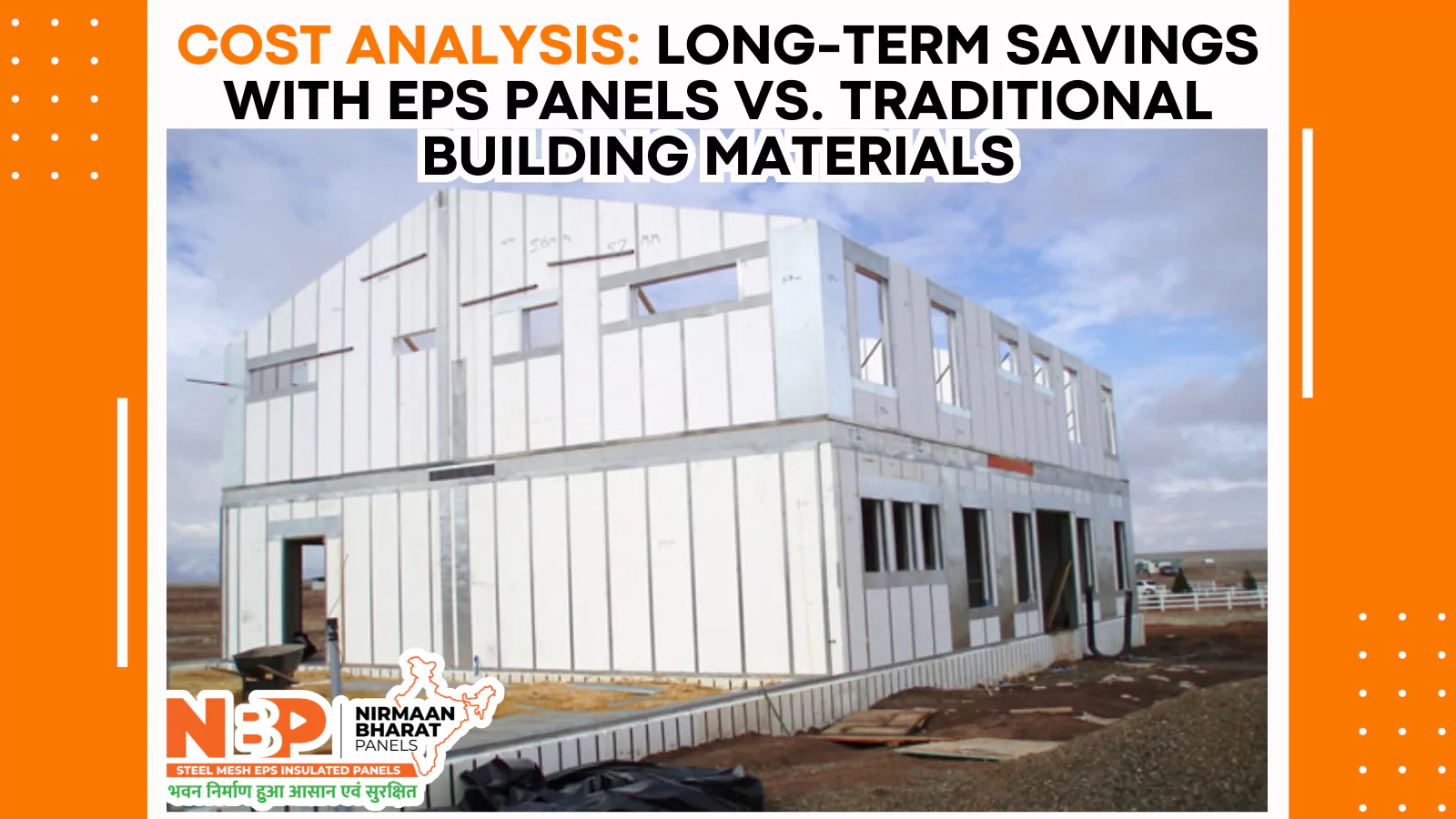In the construction industry, choosing the right materials for a building project involves a delicate balance of cost, durability, energy efficiency, and maintenance. Expanded Polystyrene (EPS) panels, a modern building material, offer a promising alternative to traditional options like wood, concrete, and brick. This article provides a comprehensive cost analysis, comparing EPS panels with traditional building materials, focusing on initial costs, energy efficiency, maintenance, durability, construction time, resale value, and environmental impact.
Table of Contents
Toggle1. Initial Costs
When evaluating initial costs, EPS panels often present a higher price point compared to traditional building materials. EPS panels are produced using advanced manufacturing processes, which contribute to their cost. Additionally, specialized installation techniques and labor might be required, further driving up the upfront expense.
Traditional materials, such as concrete blocks, bricks, and wood, typically have lower initial costs. These materials are often readily available and their installation methods are well-established. However, while the initial investment in traditional materials might be lower, it is essential to consider the subsequent costs related to insulation, energy consumption, and maintenance.
Material and Installation Costs:
Material Costs:
- EPS Panels: The cost of EPS panels in India typically ranges from ₹1,500 to ₹2,600 per square meter.
- Traditional Materials: The cost of traditional materials like brick or concrete block ranges from ₹1,200 to ₹2,500 per square meter.
Installation Costs:
- EPS Panels: Installation costs for EPS panels range from ₹800 to ₹1,600 per square meter.
- Traditional Materials: Installation costs for traditional materials, such as brick or concrete block, are generally between ₹1,600 and ₹2,500 per square meter.
Initial Cost Comparison
| Material | Material Cost (INR/sq.m) | Installation Cost (INR/sq.m) | Total Initial Cost (INR/sq.m) |
| EPS Panels | 1,500 – 2,600 | 800 – 1,600 | 2,300 – 4,200 |
| Brick | 1,200 – 2,500 | 1,600 – 2,500 | 2,800 – 5,000 |
| Concrete Block | 1,200 – 2,500 | 1,600 – 2,500 | 2,800 – 5,000 |
2. Energy Efficiency
One of the most significant advantages of EPS panels is their superior energy efficiency. EPS panels have a high R-value, which measures thermal resistance. The greater the R-value, the better the material’s insulation properties. EPS panels provide an effective barrier against heat transfer, reducing the need for additional insulation. This enhanced insulation translates to lower heating and cooling costs over the life of the building.
In contrast, traditional materials generally have lower inherent insulation properties. For instance, concrete and brick, while durable, often require additional insulation layers to achieve comparable energy efficiency. The extra costs of insulating traditional materials can add up over time, reducing their overall cost-effectiveness.
Heating and Cooling
EPS panels greatly lower energy consumption thanks to their excellent insulation capabilities.
EPS Panels:
- Energy Efficiency: EPS panels provide a high R-value, reducing the need for heating and cooling. This can result in energy savings of approximately 30% to 50% compared to traditional materials.
- Annual Energy Savings: For a typical residential building in India, energy savings can range from ₹40,000 to ₹60,000 per year.
Traditional Materials:
- Energy Efficiency: Traditional materials like brick and concrete block have lower R-values, leading to higher energy consumption for cooling and heating.
- Annual Energy Costs: Buildings using traditional materials can incur additional energy costs of ₹30,000 to ₹50,000 per year compared to those using EPS panels.
Annual Energy Costs
| Material | Annual Heating Costs (INR) | Annual Cooling Costs (INR) | Total Annual Energy Costs (INR) |
| EPS Panels | 40,000 | 30,000 | 70,000 |
| Traditional Materials | 60,000 | 50,000 | 1,10,000 |
3. Maintenance Costs
Maintenance is a crucial factor when evaluating long-term costs. EPS panels are known for their low maintenance requirements. They are resistant to moisture, pests, and rot, which minimizes the need for repairs and replacements. As a result, the long-term maintenance costs for EPS panels are generally lower.
Traditional materials can have varying maintenance needs. For example, wood needs regular treatment to protect it from rot and insect damage. Concrete and brick may need periodic sealing or repointing to address issues like cracking and water infiltration. The ongoing maintenance for traditional materials can increase their overall cost over the lifespan of the building.
Maintenance Costs
EPS panels generally incur lower maintenance costs due to their durability.
EPS Panels:
- Durability: EPS panels are resistant to moisture, mold, and pests, which reduces maintenance requirements.
- Estimated Maintenance Costs: Annual maintenance costs are typically around ₹7,000 to ₹10,000.
Traditional Materials:
- Durability Issues: Traditional materials like brick and concrete can suffer from issues such as cracking and moisture damage, requiring more frequent repairs.
- Estimated Maintenance Costs: Annual maintenance costs for traditional materials range from ₹15,000 to ₹30,000.
Annual Maintenance Costs
| Material | Annual Maintenance Costs (INR) |
| EPS Panels | 7,000 – 10,000 |
| Traditional Materials | 15,000 – 30,000 |
4. Durability and Lifespan
Durability and lifespan are critical considerations in any cost analysis. EPS panels are durable and have a long service life, but they can be susceptible to damage from UV exposure and physical impacts. Protective coatings or coverings are often recommended to extend their lifespan and maintain their performance.
Traditional materials like concrete and brick are renowned for their exceptional durability and longevity. These materials have been used for centuries and are known for their ability to withstand harsh environmental conditions. The extended lifespan of traditional materials can be an advantage, as they may not require frequent replacements or repairs.
Lifespan and Replacement Costs
EPS Panels:
- Lifespan: EPS panels generally have a lifespan of over 50 years with minimal degradation.
- Replacement Costs: Due to their durability, replacement costs are relatively low.
Traditional Materials:
- Lifespan: Traditional materials like brick and concrete can last up to 100 years but may require more frequent repairs and maintenance.
- Replacement Costs: Higher repair and maintenance costs over time can result in increased expenses.
Lifespan and Replacement Costs
| Material | Lifespan (Years) | Replacement Costs (INR) |
| EPS Panels | 50+ | Low |
| Traditional Materials | 100+ | Higher due to repairs |
5. Construction Time
The speed of construction can significantly impact overall project costs. EPS panels can accelerate the construction process due to their lightweight and easy-to-handle nature. Their modular design allows for faster assembly, reducing labor costs and project timelines.
In comparison, traditional materials often involve a more time-consuming construction process. For example, bricklaying and concrete curing can extend the project duration. Longer construction times can lead to higher labor costs and potential delays, affecting the overall budget.
Total Long-Term Savings
Over a building’s lifespan, EPS panels often prove more cost-effective despite potentially higher initial costs. Here’s a summary of the overall long-term savings:
Summary of Long-Term Savings:
- Initial Costs: EPS panels may have a higher initial cost, but this is offset by lower installation costs compared to traditional materials.
- Energy Costs: EPS panels offer significant savings in energy costs, potentially saving ₹40,000 to ₹60,000 annually.
- Maintenance Costs: EPS panels incur lower annual maintenance costs, approximately ₹7,000 to ₹10,000.
- Replacement Costs: EPS panels’ durability results in lower replacement costs over time.
Total Cost Comparison Over 50 Years:
EPS Panels:
- Initial Costs: ₹2,300 – ₹4,200 per square meter
- Annual Energy Savings: ₹40,000 – ₹60,000
- Annual Maintenance Costs: ₹7,000 – ₹10,000
- Replacement Costs: Low
Traditional Materials:
- Initial Costs: ₹2,800 – ₹5,000 per square meter
- Annual Energy Costs: ₹1,10,000
- Annual Maintenance Costs: ₹15,000 – ₹30,000
- Replacement Costs: Higher due to repairs
6. Resale Value
Resale value is an important consideration, especially for property investors and homeowners looking to maximize their return on investment. Buildings constructed with EPS panels might have a slightly lower resale value in markets where traditional materials are more common. Buyers may be more familiar with and trust traditional materials, which can influence their perception of value.
On the other hand, properties built with traditional materials generally have a well-established resale value. The perceived durability and classic appeal of materials like brick and concrete can be advantageous in the real estate market. However, the growing focus on energy efficiency and modern construction techniques might enhance the appeal of EPS-panel buildings over time.
7. Environmental Impact
Environmental impact is a growing concern in construction. EPS panels have a relatively low environmental footprint in terms of energy efficiency and waste generation. Their effective insulation properties contribute to reduced energy consumption, aligning with sustainable building practices. However, EPS is derived from petroleum products and can be less eco-friendly if not properly recycled.
Traditional materials also have environmental considerations. For example, the production of concrete and brick involves significant energy consumption and carbon emissions. However, these materials are often recyclable and have a long life cycle, which can mitigate their environmental impact over time.
8. Building Regulations and Codes
Building regulations and codes can significantly impact the choice of materials. EPS panels are increasingly being adopted in various regions due to their energy efficiency and innovative properties. Many modern building codes and standards now accommodate EPS panels, reflecting their growing acceptance in the construction industry. However, compliance with these regulations may require additional steps, such as specific installation practices or fire safety measures, which can influence overall costs.
Traditional materials have a long history of compliance with building codes and standards. They are well-established and widely accepted in most jurisdictions. This familiarity can simplify the permitting process and reduce the likelihood of regulatory issues. However, as building codes evolve to address energy efficiency and sustainability, traditional materials may require additional upgrades or supplementary insulation to meet new standards.
9. Aesthetic and Design Flexibility
Aesthetic preferences and design flexibility are crucial factors to consider when selecting building materials. EPS panels offer a high degree of design flexibility due to their ease of cutting and shaping. They can be customized to fit a wide range of architectural styles and are often used in modern, innovative designs. Additionally, EPS panels can be finished with various coatings or cladding materials to enhance their appearance and align with aesthetic preferences.
Traditional materials also offer a range of design options but might be limited by their inherent characteristics. For example, while brick provides a classic and timeless appearance, it may not easily accommodate complex or contemporary designs without additional modifications. Concrete can be molded into various shapes and finishes, offering significant design flexibility, though it often requires additional treatment or finishing to achieve specific aesthetic goals.
10. Long-Term Value and Return on Investment
Evaluating long-term value and return on investment (ROI) involves assessing both the tangible and intangible benefits of using EPS panels versus traditional materials. EPS panels can offer substantial long-term value through reduced energy costs and lower maintenance needs. The initial higher cost may be offset by these savings over time, leading to a favorable ROI for energy-conscious and maintenance-savvy property owners.
Traditional materials, while potentially offering lower initial costs and established market value, may incur higher ongoing expenses related to energy consumption and maintenance. However, their durability and traditional appeal can enhance their long-term value, especially in markets where these materials are highly valued.
Conclusion
In conclusion, EPS panels offer significant long-term savings compared to traditional building materials due to their superior energy efficiency, low maintenance requirements, and faster construction times. While the initial costs may be higher, the benefits of reduced energy bills and lower maintenance expenses can outweigh the upfront investment. Traditional materials, with their lower initial costs and established resale value, still hold advantages in durability and market perception.
Ultimately, the choice between EPS panels and traditional materials will depend on specific project requirements, including budget constraints, energy efficiency goals, maintenance expectations, and environmental considerations. Evaluating the total cost of ownership, including energy savings and long-term maintenance, is crucial for making an informed decision that aligns with both financial and environmental objectives.


